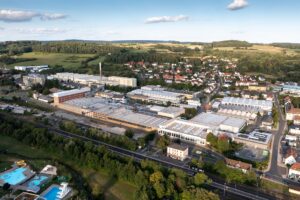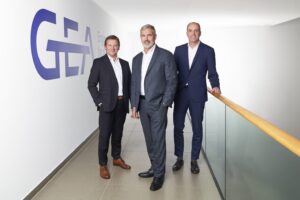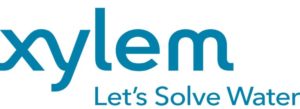Gardner Denver Reports Revenues and Earnings
Gardner Denver announced that revenues and net income for the three months ended March 31, 2006 were $399.3 million and $30.5 million, respectively. These results represent record levels for the Company, exceeding the previous records achieved in the three-month period ended December 31, 2005.
Diluted earnings per share (DEPS) for the three months ended March 31, 2006 was $1.15, 130% higher than the comparable period of the previous year, despite 29% more average shares outstanding in 2006 than in 2005 and the effect of recognizing stock-based compensation expense ($0.07 DEPS) in accordance with SFAS 123(R). The improved financial performance in 2006 is primarily attributable to flow- through profitability on strong organic revenue growth, price increases, cost reduction initiatives and the incremental benefit of acquisitions.
Outlook
"Our end markets have continued to improve and in the first quarter of 2006 we began to see some increased demand in certain segments, such as European mobile applications, that had previously been lagging. The Federal Reserve Board reported that total industry capacity utilization in the U.S. was at least 81% in both February and March 2006, which is a positive indicator of demand for our compressor and vacuum products. To meet the demand growth, we have been outsourcing certain manufacturing operations to relieve production bottlenecks and have invested in capital for longer-term solutions. Demand for our drilling and well stimulation pumps remains strong and we expect this to continue through 2007. Further revenue increases for these products will depend upon our ability to identify additional outsourcing alternatives and implement further price increases.
"The first quarter results demonstrated the benefits of the production efficiency improvements and investments in lean manufacturing programs that we have been pursuing. I expect the benefit of these improvements to continue through 2006, although net income in the second half of 2006 is currently expected to be less than that of the first half of 2006 due to fewer production days in Europe and incremental expenses and manufacturing inefficiencies associated with our blower manufacturing rationalization project. I also believe our lean manufacturing techniques will contribute to inventory reductions over time," noted Mr. Centanni, Chairman, President and CEO.
"Given our current economic outlook, as well as our existing level of backlog and recent manufacturing improvements, we are increasing our DEPS outlook for 2006 significantly to a range of $4.05 to $4.25, with second quarter DEPS approximating $1.00 to $1.15. The midpoint of the range for 2006 ($4.15) represents a 51% increase over the 2005 results, despite the reduction in DEPS associated with recognizing stock-based compensation expense in accordance with SFAS 123(R) and a greater number of average shares outstanding for the twelve-month period of 2006, compared to 2005.
The implementation of SFAS 123(R) is expected to reduce net income by $0.4 million in each of the remaining quarters of 2006 ($0.05 DEPS for the remainder of the year). Based on current expectations for the sources and magnitude of earnings in 2006, the effective tax rate assumed in the DEPS guidance for 2006 is 32%. The anticipated effective tax rate for 2006 is expected to increase from the rate incurred in the prior year (and our previous expectation for 2006) primarily as a result of incremental pretax income generated by the Company's operations in the United States and Germany in 2006, which are taxed at rates higher than the effective average of 2005 (30%). This outlook for DEPS does not reflect the two-for-one stock split (in the form of a stock dividend) that was previously approved by our Board of Directors. If stockholders approve the requested increase in the number of authorized shares of the Company's common stock necessary to complete the stock split, the record date for the split will be May 11, 2006 and the expected distribution date will be June 1, 2006."
Revised Reportable Segment Composition
The Company also announced a change in the composition of its reportable segments. The Company's line of specialty bronze and high alloy pumps for the general industrial and marine market segments, acquired in July 2005 as part of Thomas Industries Inc., and the Company's line of self-sealing couplings, acquired as part of Syltone plc in January 2004, were previously included in the Compressor and Vacuum Products segment from their respective dates of acquisition. Self-sealing couplings are used to safely transfer petroleum products, chemicals and various other liquids. During the first quarter of 2006, Gardner Denver completed an internal reorganization and these businesses are now part of the Company's Fluid Transfer Division. Accordingly, their financial results are included in the Fluid Transfer Products segment. The Todo Group, a manufacturer of self-sealing couplings acquired by Gardner Denver in January 2006, is also included in the Fluid Transfer Products segment. The 2005 reportable segment results included in this press release have been restated to conform to the current presentation.
First Quarter Results
Revenues increased $160.5 million (67%) to $399.3 million for the three months ended March 31, 2006, compared to the same period of 2005. Compressor and Vacuum Products segment revenues increased 68% for the three-month period of 2006, compared to the previous year, primarily due to the incremental effect of acquisitions, stronger demand, manufacturing and supply chain improvements that resulted in increased production output, and price increases. Fluid Transfer Products segment revenues increased 63% for the three months ended March 31, 2006, compared to the same period of 2005, due to stronger demand for drilling and well servicing pumps, manufacturing and supply chain improvements, incremental shipments as a result of increased outsourcing and price increases. (See Selected Financial Data Schedule.)
Orders for the three-month period ended March 31, 2006 were $125.3 million (42%) higher than the same period of the previous year, due to acquisitions and organic growth. The year-over-year organic growth in orders for compressor and vacuum products was 9%. This segment represented approximately 80% of the Company's total revenues in the first three months of 2006. This organic order growth was relatively broad-based, with no specific market segment or region driving the improvement. The 7% organic order growth for fluid transfer products for the three-month period of 2006 resulted from a key customer placing two large orders for drilling pumps. Management was aware of the demand for these pumps, which are scheduled to ship in 2006, and was holding production capacity to satisfy these requirements. Despite the increased production levels in 2006, orders in each reportable segment exceeded revenues for the first quarter of 2006, resulting in a 5.8% total backlog increase from December 31, 2005.
Gross margin (defined as revenues less cost of sales) as a percentage of revenues (gross margin percentage) increased to 35.1% in the three-month period ended March 31, 2006, from 32.6% in the same period of 2005. This improvement was attributable to cost reduction initiatives, leveraging fixed and semi-fixed costs over additional production volume, acquisitions and price increases. Favorable sales mix also contributed to increased gross margin as the first quarter of 2006 included a higher percentage of drilling pump and replacement pump parts sales than the previous year and these products generate gross margin percentages in excess of the Company's average.
As a percentage of revenues, selling and administrative expenses decreased to 18.5% for the first three months of 2006, compared to 22.0% for the same period of 2005. Selling and administrative expenses increased $21.3 million in the three-month period ended March 31, 2006 to $73.7 million, due primarily to the incremental effect of acquisitions ($20.0 million) and stock-based compensation expense ($2.8 million), partially offset by changes in currency exchange rates and cost reductions. A disproportionate amount of stock-based compensation expense was recognized in the first quarter of 2006 due to the number of options and awards held by employees eligible for retirement.
As a result of the improved gross margin percentage and leveraging selling and administrative expenses over higher revenues, operating margin for each reportable segment improved for the three-month period ended March 31, 2006, compared to the same period of 2005 and the three-month period ended December 31, 2005. Operating margin for the Compressor and Vacuum Products segment was 11.2% in the three months ended March 31, 2006, compared to 6.7% in the same period of 2005 and 10.5% for the three-month period ended December 31, 2005. The Fluid Transfer Products segment operating margin increased to 23.0% for the three months ended March 31, 2006, compared to 10.8% in the same period of 2005 and 21.0% for the three months ended December 31, 2005.
Incremental borrowings necessary to complete acquisitions and higher effective interest rates resulted in increased interest expense for the three months ended March 31, 2006, compared to the same period of 2005. Furthermore, as a result of a more rapid repayment of debt, interest expense for the three-month period of 2006 included approximately $0.6 million of accelerated amortization of debt issuance costs. Including this accelerated amortization, the weighted average interest rate for the three-month period of 2006 was 6.9%, compared to 5.1% in the prior year period.
Net income for the three months ended March 31, 2006 increased $20.2 million (196%) to $30.5 million, compared to $10.3 million in same period of 2005, despite the inclusion of stock-based compensation expense and a higher effective tax rate in 2006 (32%) than in 2005 (30%). These results include approximately $4.2 million of net income from Thomas Industries' operations for the three months ended March 31, 2006. The net income attributable to the acquisition of the Todo Group was not material during the first quarter of 2006. Diluted earnings per share for the first three months of 2006 were $1.15, 130% higher than the previous year as a result of the increased net income. The improvement in DEPS includes the dilutive effect of the issuance of 5.7 million shares in May 2005.
Cash used in operating activities was approximately $8.8 million in the three-month period of 2006, compared to $12.1 million in the same period of 2005. Although the Company realized some benefit of lean manufacturing initiatives, investments in accounts receivable and inventory increased in the first quarter of 2006 as a result of rising revenues and greater material requirements associated with higher production levels. Opportunities for inventory reductions exist through the expanded use of lean manufacturing techniques and additional supplier performance improvements, and the Company expects to see improvements in inventory turnover during 2006.
The Company invested approximately $6.5 million in capital expenditures in the three-month period of 2006, compared to $5.2 million in the same period of 2005. The higher spending in 2006 reflects incremental investments in acquisition integration, cost reductions and capital spending at Thomas Industries' operations. Capital spending is currently expected to be approximately $45 million to $50 million in 2006, and will be used primarily to integrate businesses, introduce new products and improve operations. Other than capital expenditures, cash provided by operations was used to repay debt. At the end of March 2006, debt to total capital was 45.3%, compared to 46.4% on December 31, 2005.
Source: Gardner Denver, Inc.





